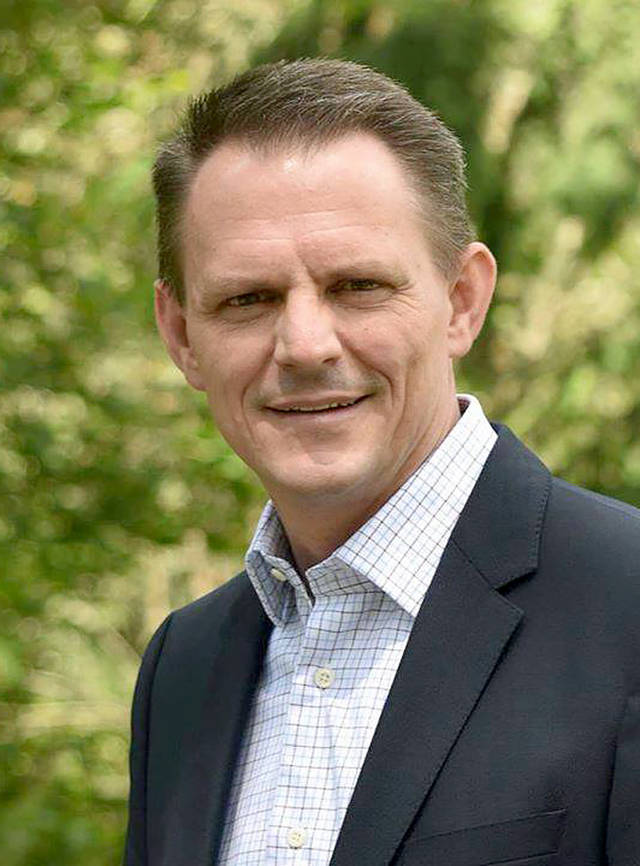MONROE — Monroe’s school board president has apologized for saying some parents helping students with remote schoolwork are ”day drinkers.”
During a Sept. 14 board meeting, President Jim Langston voiced many frustrations with the district’s phased approach to resuming in-person instruction. The district plans to share information soon on when elementary students can return to class. Middle and high school students could return after the first quarter ends in November.
The schedule follows recommendations from the county’s top health officer Dr. Chris Spitters; the state Office of the Superintendent of Public Instruction; and state Department of Health. If it were up to Langston, students of all ages would be back in school, he said.
“I’m about ready to lose my stuff,” he said. “If Dr. Spitters wants to err on the side of caution, that’s awesome, but what’s he doing for alcoholism, what’s he doing for drug addiction, what’s he doing for teenage suicide, what’s he doing for — we have 6,700 kids right now, and I’m quite certain some of them are being taught by day drinkers.”
On Wednesday, he apologized with a written statement.
“Our staff are doing a tremendous job educating our students in a brand new way and I was not referencing them in the comment I made,” he said in an email Friday. “I am extremely concerned about the mental well-being of our students and the fact that some of our students have unfortunate circumstances in their homes. The way in which I phrased that concern was in poor taste. The root of my frustration was my concern for our kids; I am worried about them. I am committed to doing better on behalf of our kids and our community moving forward.”
In a statement Thursday, Spitters said government leaders and public health experts have tried to balance “the necessary public health interventions with downstream impacts.”
“However, our primary focus is preventing and stopping the spread of disease,” he said. “The layered interventions need to be dialed back in a measured manner so that we don’t inadvertently cause a spike in cases that overwhelms the health care system. We’re grateful for the collaboration with our school partners who are stepping up to meet the needs of so many in extraordinary conditions.”
Throughout September, the health district has taken part in several discussions and panels concerning drug addiction, suicide prevention and mental health.
With about 40 new COVID cases per 100,000 residents in the last two weeks, Snohomish County is in the state’s moderate risk category for virus spread.
Public health experts don’t recommend middle or high school students to return to campuses until there are fewer than 25 cases per 100,000 residents. Bringing back students too quickly could lead to a large bump in COVID cases, according to a state Department of Health study.
“The worst case scenario for me, President Langston, is to start and have to stop,” Superintendent Justin Blasko said during the meeting.
Other school districts in Snohomish County have started, or plan to start, similar phased reopenings: Arlington, Sultan and Stanwood-Camano.
During the school board meeting, Langston said health officials haven’t clearly communicated the guidelines, and that their requirements for schools are “the best kept secret out there.”
In reality, Spitters meets with local superintendents and administrators every two weeks, including Superintendent Blasko.
Langston also incorrectly said Snohomish County was supposed to enter Phase Three of the Safe Start plan when cases dropped below 50 per 100,000 over a two week period.
Earlier this summer, the state paused all counties from advancing through the phases when cases roared back. There is no timeline for when Snohomish County could apply to enter the next phase and there are no plans to do so, Executive Dave Somers said earlier this week.
As of Monday, the county was failing to meet most of the benchmarks previously required to advance to Phase Two — which it’s currently in.
However, leaders are looking to roll back some restrictions on agrotourism sites, like pumpkin patches, Somers said.
Also during the meeting, the board unanimously voted against an agreement that would let the health district use Monroe High School as a site for vaccine distribution, in case of a public health emergency, like the COVID-19 pandemic.
Langston said he supports a deal with the health district, but the site should be at the old administrative offices, instead.
“I just don’t think the high school is the place to do that when we want to get back to school,” he said. “With all that being said, however, nothing happens for free … I don’t want to keep the lights on for them and have the Monroe School District taxpayers foot the bill for the entire county.”
The health district has similar contracts with the Everett School District and Sno-Isle Libraries. Those public agencies don’t charge the health district to use their facilities, district spokesperson Heather Thomas said.
Initial discussions for the agreement with the Monroe School District started last year, she said.
Joey Thompson: 425-339-3449; jthompson@heraldnet.com. Twitter: @byjoeythompson.
Correction: An earlier version of this story incorrectly stated elementary students in the Monroe School District would be returning to in-person class beginning on Oct. 5.
Talk to us
> Give us your news tips.
> Send us a letter to the editor.
> More Herald contact information.

























